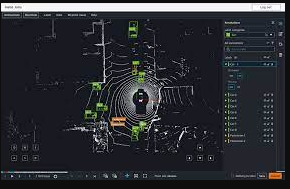Introduction
AI has altered how we process, examine, and decipher information. Notwithstanding, for AI calculations to work proficiently, they require huge amounts of market information. Information naming and grouping are fundamental stages in the AI cycle that empower calculations to gain from the information and make precise expectations. In reality, as we know it where information is above all else, the significance of information marking and order couldn't possibly be more significant. In this article, we will investigate the meaning of information marking and characterization in AI, and what it means for the precision and adequacy of AI models. Whether you're an information researcher, an AI devotee, or just somebody who needs to remain on the ball, this article will give you a far-reaching comprehension of why information marking and characterization are basic in AI. Thus, how about we take a plunge and investigate the universe of information, marking, and order?
Understanding the job of information marking in AI
Information naming is the most common way of doling out marks or labels to information focuses to sort them given explicit qualities or traits. In AI, named information is utilized to prepare AI models with the goal that they can perceive examples and make expectations. Without marked information, AI calculations can't gain from the information and make exact expectations. Information marking plays a significant role in the progress of AI models, as it determines the precision and viability of the calculation.
Information marking should be possible physically or logically. Manual information marking includes human annotators who physically name data of interest, while programmed information naming uses calculations to mark the information. Manual information naming is by and large more exact and solid than programmed information marking, yet it is likewise tedious and costly. Programmed information naming is quicker and less expensive, yet it can likewise be less precise and dependable than manual information marking.
Various kinds of information naming methods
There are a few distinct information naming strategies that can be utilized in AI. The most well-known kinds of information naming strategies are:
Administered learning:

In regulated learning, the calculation is prepared on named information, where the information and the comparing yield information are given to the calculation. The calculation figures out how to perceive patterns in the information and make forecasts given the named yield information.
Solo learning:

In unaided learning, the calculation is prepared on unlabeled information, where the information is given to the calculation with next to no comparing yield information. The calculation figures out how to perceive designs in the information and gather comparable information.
Semi-regulated learning:

Dynamic learning:

In dynamic learning, the calculation is prepared on a modest quantity of named information, and the calculation chooses the most enlightening information and focuses to mark straightaway. This approach can save time and assets by reducing the amount of marked information required to prepare the calculation.
Challenges in information marking and arrangement
Information marking and arrangement can be a challenge, as it requires human annotators to precisely name data of interest. A portion of the normal difficulties in information marking and characterization are:
Subjectivity:

Information naming can be abstract, as various annotators might have various translations of the information. This can prompt irregularities in the naming system and influence the precision of the calculation.
Vagueness:

Information can be equivocal, particularly in situations where there is no unmistakable qualification between various classes. This can make it hard for annotators to mark the information precisely.
Cost and time:

Information marking can be tedious and costly, particularly for enormous datasets. Manual information naming can require weeks or months to finish, and finding annotators with the fundamental abilities and expertise can challenge.
Name commotion:

Mark's clamour alludes to the mistakes and blunders in the named information. This can happen because of human blunders or irregularities in the naming system. Name clamour can influence the precision and adequacy of the calculation.
Advantages of involving information marking and characterization in AI
Notwithstanding the difficulties in information marking and grouping, there are a few advantages to involving named information in AI. A portion of the advantages are:
Further developed precision:
Marked information empowers AI calculations to gain from the information and make exact expectations. The more named information the calculation has, the more exact the expectations will be.
Quicker preparation:
Named information can accelerate the preparation and interaction of AI calculations. With named information, the calculation can learn quicker and make expectations continuously.
Better experiences:
Marked information can give better bits of knowledge and assist with recognizing examples and patterns that may not be apparent in unlabeled information.
Expanded proficiency:
Named information can build the effectiveness of AI models, as the calculation can rapidly recognize applicable information and make expectations in light of that information.
Best practices for information naming and order
To guarantee the precision and dependability of information marking and characterization, following accepted procedures is fundamental. The absolute prescribed procedures for information marking and grouping are:
Characterize clear marking rules:
Clear naming rules can assist with guaranteeing consistency and exactness in the naming system. Rules ought to be straightforward and followed.
Utilize numerous annotators:
Utilizing various annotators can assist with decreasing subjectivity and working on the exactness of the naming system. Annotators ought to be prepared and have a decent comprehension of the information and the naming rules.
Quality control:
Quality control measures, for example, between annotator arrangements, can assist with guaranteeing the exactness and dependability of the named information.
Customary updates:
Normal updates to the marking rules and the naming system can assist with working on the precision and unwavering quality of the marked information.
Well-known devices for information naming and order
There are a few instruments accessible for information naming and ordering. The absolute most well-known apparatuses are:
Labelbox:

A label box is a stage for information marking and explanation. It gives an easy-to-understand point of interaction to annotators and supports many information designs.
Amazon SageMaker Ground Truth:

Amazon SageMaker Ground Truth is a completely overseen information marking administration that gives excellent named information to AI models.
Google Cloud AutoML:

Google Cloud AutoML gives a set-up of devices for information marking and order. It incorporates instruments for picture naming, text characterization, and regular language handling.
OpenAI GPT-3:

OpenAI GPT-3 is a language model that can be utilized for text grouping and regular language handling. It can produce human-like text and can be tweaked for explicit assignments.
Contextual analyses on the significance of information naming and order in AI
A few contextual investigations have exhibited the significance of information marking and characterization in AI. One such contextual analysis is the utilization of named information in picture acknowledgement. In a study by Google, the precision of a picture acknowledgement calculation was tried utilizing named and unlabeled information. The calculation prepared on marked information accomplished an altogether higher exactness than the calculation prepared on unlabeled information.
Another contextual analysis is the utilization of marked information in regular language handling. In a study by Microsoft, the precision of a characteristic language handling calculation was tested utilizing marked and unlabeled information. The calculation prepared on named information accomplished fundamentally higher precision than the calculation prepared on unlabeled information.
Future ramifications and advancements in information naming and order
Information marking and characterization are fundamental stages in the AI cycle, and as AI keeps on developing, so too will the strategies for information naming and arrangement. One area of improvement is the utilization of unaided reasoning, where calculations can benefit from unlabeled information without the requirement for manual naming. One more area of improvement is the utilization of dynamic realizing, where calculations can choose the most instructive information focuses to name straightaway, diminishing how much-marked information is expected to prepare the calculation.
Conclusion

Information marking and arrangement are basic parts of the AI interaction. Without marked information, AI calculations can't benefit from the information and make precise forecasts. Nonetheless, information marking and grouping can be a challenge, as it requires human annotators to precisely name data of interest. To guarantee the exactness and dependability of information marking and grouping, it is fundamental to follow best practices and utilize quality control measures. As AI keeps on advancing, so too will the strategies for information marking and order, and it will be energizing to perceive what these advancements will mean for the exactness and viability of AI models.




0 Comments